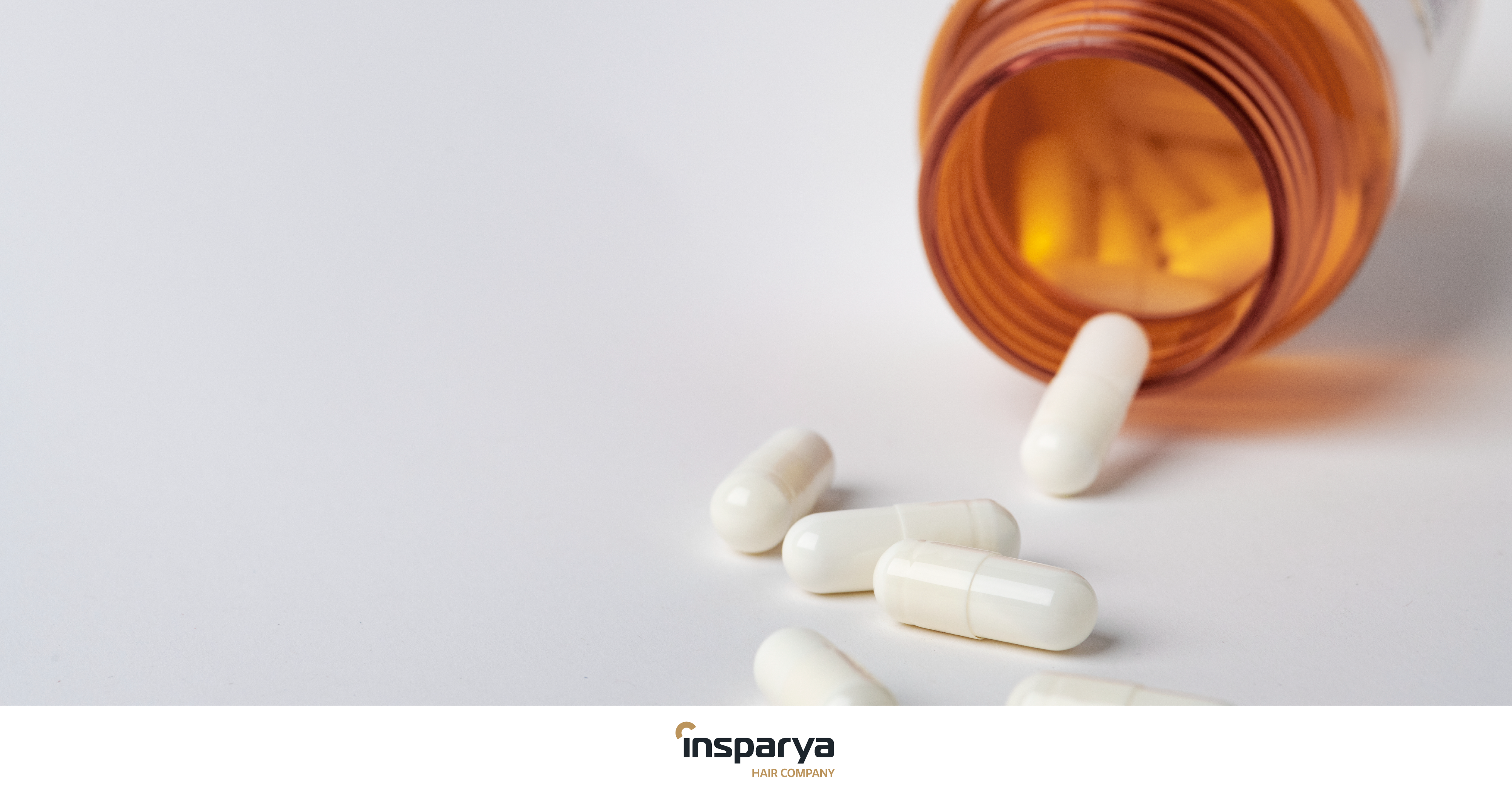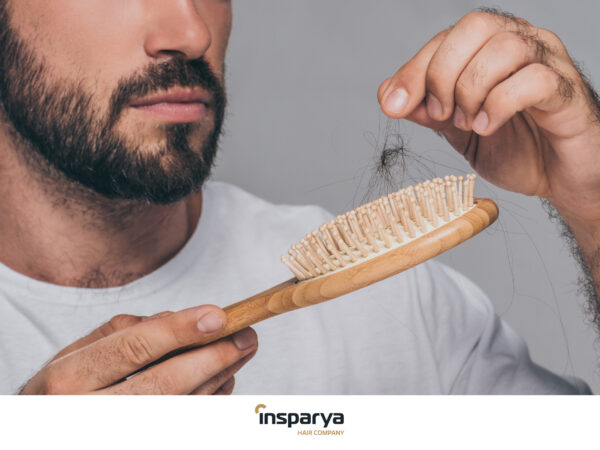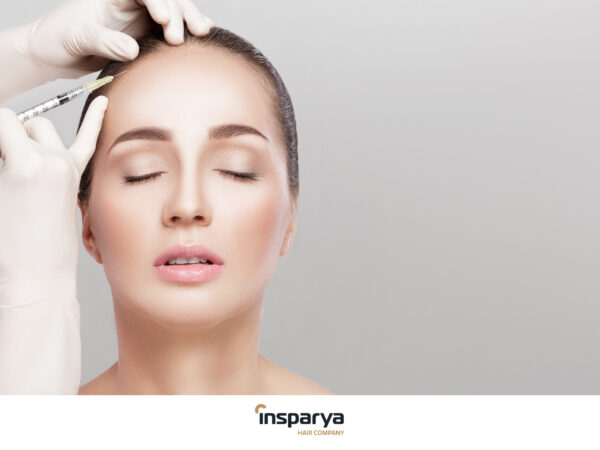
Dutasteride for alopecia, side effects and reviews
- What is Dutasteride?
- How long does it take to grow hair with Dutasteride?
- How long does treatment with Dutasteride take?
- How many mesotherapy sessions with Dutasteride are needed?
- Dutasteride: an effective solution for alopecia?
- Dutasteride vs Finasteride: which is more effective?
- Dutasteride vs Minoxidil: are they the same?
- Dutasteride vs transplant: which option to choose?
- What are the side effects?
- Dutasteride Reviews
There are multiple treatments for hair loss, but it is crucial to identify the type of alopecia and the cause. One solution for baldness is Dutasteride, an antiandrogen medication that thickens the hair and stops it from falling out. It is effective in the early stages of androgenic alopecia. It is also an indicated treatment for androgenic alopecia in postmenopausal women.
What is Dutasteride?
It is a drug that reduces the action of androgens on the follicle. These androgens are responsible for androgenic alopecia. That is, it inhibits the enzyme 5-alpha reductase, which is responsible for transforming testosterone into dihydrotestosterone (DHT), which is what damages the follicles and triggers alopecia. It thickens the follicular units and slows down hair loss. It acts similarly to finasteride.
Finasteride was originally used as a treatment for benign prostate hyperplasia until it was observed that it improved capillary density. Dutasteride then began to be used for alopecia because it’s a more powerful drug than finasteride. But we must bear in mind that the only definitive solution for alopecia today is hair transplantation.
If the degree of alopecia is still low, it’s possible to treat it orally or topically with Dutasteride in the form of cream, lotion, or microinjections. Likewise, to enhance its effects it’s a good idea to also apply treatments such as capillary mesotherapy or Platelet Rich Plasma (PRP).
The most common form of administration is mesotherapy, which involves applying microinjections of Dutasteride to the areas affected by alopecia. In this way, the drug acts directly on the root of the follicle. It is a practically painless process, which lasts less than half an hour, does not require subsequent care and leaves no mark. Local anaesthesia is administered to avoid any kind of discomfort.

How long does it take to grow hair with Dutasteride?
Consistency is the key with hair treatments, as well as adjusting them to the type of alopecia and the particularities of each patient. It usually takes weeks or months to see the first results, because the task of reversing the miniaturisation caused by androgens and the growth of new follicles doesn’t happen overnight. The length of the hair life cycle must also be taken into account.
In the case of Dutasteride, its effects begin to be noticed after 3-6 months, reaching the maximum results after a year or year and a half.
How long does treatment with Dutasteride take?
As with most anti-hair loss solutions, we must bear in mind that we are talking about long-term treatments. Dutasteride has a half-life that lasts several weeks, so mesotherapy treatment is usually applied every 3-6 months, depending on the case. If administered orally, a first session of microinjections is usually recommended to speed up the process.
How many mesotherapy sessions with Dutasteride are needed?
Usually, 2-3 sessions per year are needed to increase hair density.
It is a drug that reduces the action of androgens on the follicle. These androgens are responsible for androgenic alopecia. It was originally used as a treatment for benign prostatic hyperplasia until it was observed to improve capillary density. It began to be used to stop baldness, although the only definitive solution for alopecia today is hair transplantation.
If the degree of alopecia is still low, it’s possible to treat it orally or topically with Dutasteride in the form of cream, lotion, or microinjections. Likewise, to enhance its effects it’s a good idea to also apply treatments such as capillary mesotherapy or Platelet Rich Plasma (PRP).
As for adverse effects, a very low percentage of patients have been detected who present hormonal changes following treatment with Dutasteride pills, which can cause a decrease in libido and erectile dysfunction in males. In addition, it should be noted that it is not suitable for advanced cases of alopecia or traction alopecia.
Dutasteride: an effective solution for alopecia?
Although new treatments for alopecia have appeared in recent years, Dutasteride remains one of the most effective drugs for curbing androgenetic alopecia. To enhance its effect it is highly recommended to combine it with other capillary treatments such as Platelet Rich Plasma (PRP). That way, the action of the antiandrogen on the follicle is complemented by that of the PRP, which regenerates and rejuvenates the scalp, promoting the growth of new, healthy hair.
The density and quality of the hair improve in a very significant way with Dutasteride, which results in greater self-esteem and self-confidence. Alopecia goes beyond being a simple aesthetic issue and often affects the mental health of those who suffer from it.
Dutasteride vs Finasteride: which is more effective?
The main difference between these antiandrogen drugs (dutasteride and finasteride) is that finasteride only inhibits the enzyme 5-alpha reductase type II, while dutasteride blocks types I and II. This enzyme is responsible for hair loss. Its action consists of transforming testosterone into dihydrotestosterone (DHT), which is what alters the hair cycle and causes its miniaturisation.
Therefore, both drugs block the main cause of hair loss, allowing it to grow again, although Dutasteride is more powerful than Finasteride because it inhibits both types of enzymes, so it will block DHT more effectively. In addition, its half-life is much longer than that of Finasteride.
Dutasteride vs Minoxidil: are they the same?
Minoxidil, like Dutasteride, was intended for a different purpose other than promoting hair health. It was designed to regulate blood pressure. But given its vasodilating action, it was detected that a side effect of the drug was the strengthening of the hair and stimulation of new hair growth. That’s why it began to be used to stop baldness, and today it is one of the most widespread treatments.
In short, Minoxidil’s vasodilator effect makes it easier for nutrients to reach the follicular units. Meanwhile, Dutasteride is an antiandrogen that inhibits the action of testosterone on hair growth.
Both can be taken as pills or applied directly to the scalp through microinjections, which is known as mesotherapy. In addition, Minoxidil is often used topically (as a gel, spray or cream).

Dutasteride vs transplant: which option to choose?
Dutasteride is a good choice for incipient baldness and for men under the age of 30. It is also effective in women with androgenetic alopecia and frontal fibrosing. But, if there has already been complete hair loss, the most realistic alternative is hair transplantation. That way, we can improve the capillary density of the affected areas definitively, with a painless intervention that lasts no more than 6 hours and has very natural results.
Moreover, sometimes Dutasteride is administered after a hair transplant to improve the results by protecting the implanted follicular units and giving them more vitality. But if we are facing an aggressive form of alopecia or a large amount of hair has fallen out, transplantation is the only way to recover the lost hair.
The specialist will decide which option is the most suitable.
What are the side effects?
Adverse effects or side effects of Dutasteride have been detected in a very low percentage of patients with hormonal changes following treatment with Dutasteride tablets. Its administration can cause a decrease in libido and temporary erectile dysfunction in men, although, with the doses that are administered in the treatments against alopecia, it is rare that these problems occur.
Also, like any other medicine, it may cause an allergic reaction, although this is rare. So if you are taking it and notice itching, swelling in the throat or face, redness in the skin or rashes, consult a doctor as soon as possible.
Women should avoid becoming pregnant while taking Dutasteride and at least six months after finishing it. Of course, it will not interfere in any way with the fertility of the patient (even in the case of men) or with subsequent pregnancies.
It should be borne in mind that Dutasteride is a very safe and effective drug, with a very low probability of side or adverse effects and very powerful results that undoubtedly justify that minimal risk.
Dutasteride Reviews
As we have explained, Dutasteride is indicated for cases of androgenetic alopecia, but it is not effective when the hair loss is the result of an autoimmune disease, other hormonal issues (hypothyroidism, hyperthyroidism, postpartum, etc.) or in the cases of scar or traction alopecia. This underscores the importance of a correct diagnosis.
Reviews of Dutasteride usually point out that it is more potent than Finasteride and that the improvement in capillary density is very noticeable, especially at the front of the head. Patients mostly indicate that hair loss is slowed down in a very noticeable way. As for the side effects, most people who have undergone treatment with this drug have not suffered any of the side effects described, so the experiences are mostly very positive.
The use of Dutasteride should be prescribed by a specialist doctor. If you have noticed a loss of capillary density and want to effectively slow the progression of alopecia, contact Insparya. We have experts with years of experience in the hair health sector and a multidisciplinary team with different medical specialties that will find the solution for your needs.





